Another public nursery is born! This is a reason for joy and happiness on the part of orchid connoisseurs and lovers and, why not say, nature lovers.
Beautiful plants on display with their colorful flowers, (almost always...) showy and fragrant! The opportunity for the general public to have access to plants that are otherwise only seen by researchers who go deep into the forests. Being in the city of Juiz de Fora, it also represents the realization of the dream of one of the greatest scholars of Brazilian orchids, Frederico Carlos Hoehne, who in his youth wanted to create a public space of this nature in Halfeld Park, downtown. , but unfortunately it was not successful. However, for various reasons, reality is not always one of joy and happiness...
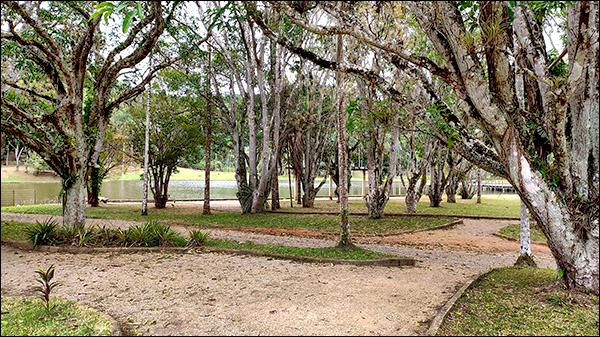
|
But, before we develop this subject further (and justify ourselves by a certain negativity) let us start with a brief history of the Botanical Garden of the Federal University of Juiz de Fora (JB/UFJF) and, consequently, of its nursery, which is also associated with a collection of bromeliads.
The text presented in the next two paragraphs has been adapted and summarized from that available on the Jardim Botânico website, where its full story can be found:
botanical-historical garden
Botanical Garden - history |
The area where the JB/UFJF is installed was originally owned by a German immigrant, Mr Detlef Krambeck, patriarch of the Germanic family who arrived in Juiz de Fora in 1872, initially working as a carriage manufacturer and later settling in tanning area for leather and fur.
The Krambeck family acquired three properties in the region that were spun off from the old Fazenda da Tapera, called Retiro Novo, Retiro Velho and Sítio Malícia, which made up the locally known Mata do Krambeck. The last property, Sítio Malícia, was the residence of the son of Mr. Krambeck, Pedro, who carried out landscaping works including the creation of artificial lakes, avenues of araucaria, cedars and paineiras, gardens and orchards, representing the foundations of what would become the JB/UFJF.
In 1992, the Mata do Krambeck Environmental Protection Area (APA) was created, covering the three properties listed above, covering a total of 374 hectares.
|
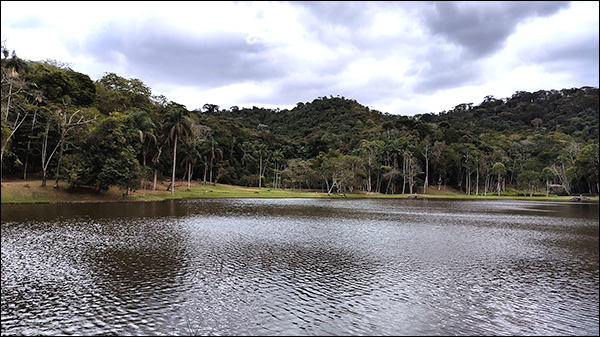
|
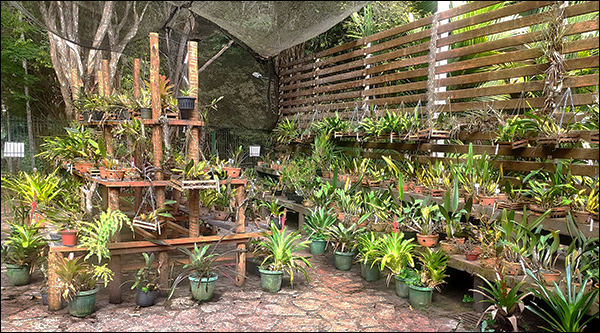
|
However, Sítio Malícia was excluded from the APA the following year.
A few years later, this property was the target of a group of businessmen who acquired it with the aim of building a luxury condominium, an act that was followed by strong opposition from civil, public and non-governmental organizations, with debates at public hearings in the years that followed.
In 2007, the Federal University of Juiz de Fora announced, in a public hearing, its interest in acquiring an area of 82 hectares for the purpose of creating a botanical garden, a process that ended with the signature of the deed in 2010 and had its heyday when the JB/UFJF was officially opened to the public in April 2019.
|
The area has the Main House, where itinerant exhibitions are held, Research Center, Sustainable House Laboratory, Environmental Education Center, Administrative Headquarters, open-air classroom, thematic itineraries, two artificial lakes with decks for contemplation and trail inside the forest (the Juçara Trail). And, of course, the living collections of orchids and bromeliads.
The plants that make up the JB/UFJF nursery were obtained predominantly from three sources, the most important in terms of volume and diversity of plants being the donations made by Mrs. Maria do Rosário de Almeida Braga at the end of 2019 and beginning of 2022, of remaining specimens of the Quinta do Lago Orquidário, in Itaipava-RJ, currently deactivated.
|
 |
These two lots were formed by numerous species, among which stand out:
Bifrenaria tyrianthina, Brassavola perrinii, Cattleya schilleriana, C. warneri, Epidendrum nocturnum, Hadrolaelia perrinii, H. tenebrosa, H. purpurata (including several chromatic varieties), Isabelia pulchella, I. virginalis (including the beautiful alba variety), Leptotes bicolor, Maxillaria tenuifolia, M. schunkeana, Miltonia clowesii, M. spectabilis, Myoxanthus exasperatus, Oncidium baueri, O. flexuosum, O. pratextum, Pleurothallis pubescens, P. saurocephala, among others.
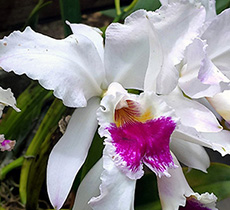 |
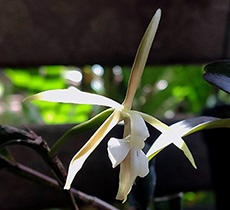 |
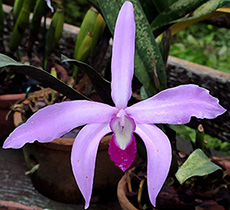 |
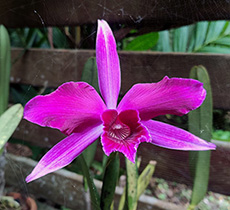 |
Cattleya warneri |
Epidendrum nocturnum |
Hadrolaelia perrinii |
Hadrolaelia purpurata |
 |
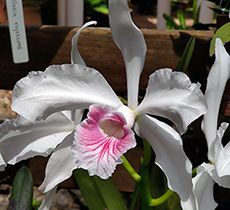 |
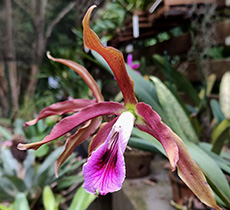 |
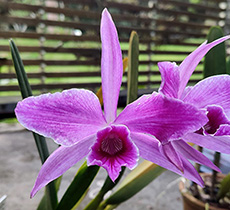 |
Hadrolaelia purpurata |
Hadrolaelia purpurata |
Hadrolaelia tenebrosa |
Hadrolaelia purpurata |
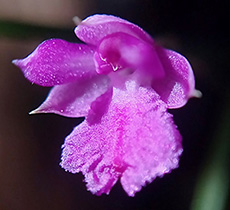 |
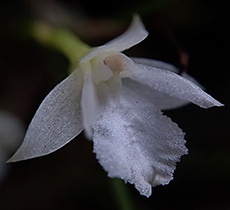 |
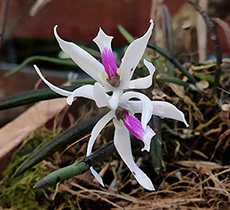 |
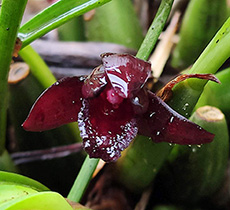 |
Isabelia pulchella |
Isabelia pulchella alba |
Leptotes bicolor |
Maxillaria schunkeana |
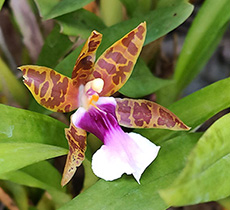 |
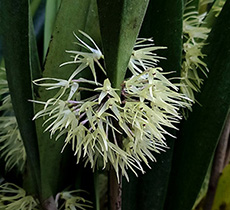 |
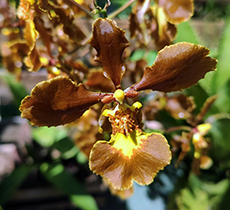 |
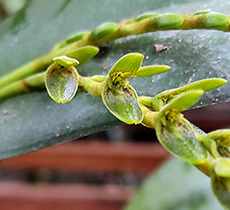 |
Miltonia clowesii |
Myoxanthus exasperatus |
Oncidium praetextum |
Pleurothallis saurocephala |
Also very relevant for the composition of the current collection of the nursery was the anonymous donation of an orchidophile residing in Juiz de Fora, at the end of 2021, with several hybrids of intense and varied colors, species of Cattleya (such as C. amethystoglossa, C. guttata, C. intermedia and C. walkeriana), several species of Bulbophyllum (such as B. frostii and especially the singular B. medusae), Dichaea pendula, Hoffmannseggella milleri, Isabelia virginalis, Octomeria diaphana, in addition to the very interesting Angraecum sesquipedale , the well-known “Darwin's orchid”.
Complementing the collection are plants from a rescue carried out between July 1996 and June 1997 in the region under the direct influence of the implementation of the Mello Hydroelectric Power Plant in Ribeirão Santana (Municipality of Rio Preto-MG), as well as examples of research projects of professors and students linked to UFJF in recent years.
Examples of Bifrenaria harrisoniae, Bifrenaria inodora, Bifrenaria tetragona, Bulbophyllum exaltatum, B. micropetaliforme, Campylocentrum pauloense, Catasetum cernuum, Cattleya bicolor, Elleanthus brasiliensis, Encyclia patens, Epidendrum ramosum, E. secundum, Eurystyles actinosophila, Gomesa recurva, Grobya amherstiae, Isochilus linearis, Maxillaria ochroleuca, M. rufescens, M. subulata, Octomeria grandiflora, Pleurothallis auriculata, P. grobyi, Polystachya estrellensis, Stelis aprica, S. argentata, Stelis papaquerensis, Xylobium undulatum, among others.
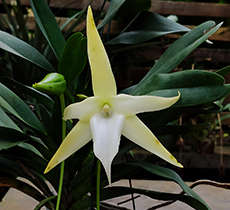 |
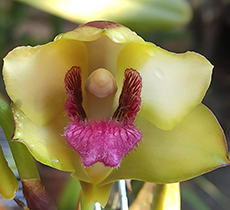 |
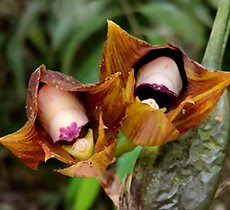 |
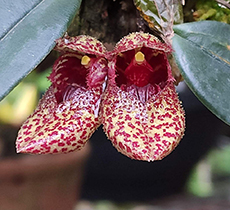 |
Angraecum sesquipedale |
Bifrenaria harrisoniae |
Bifrenaria tetragona |
Bulbophyllum frostii |
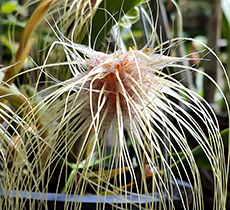 |
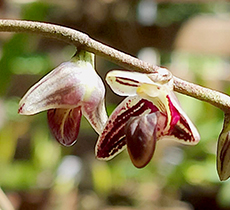 |
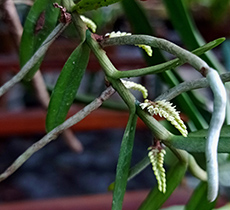 |
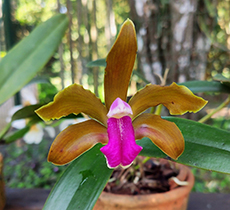 |
Bulbophyllum medusae |
Bulbophyllum micropetaliforme |
Campylocentrum pauloense |
Cattleya bicolor |
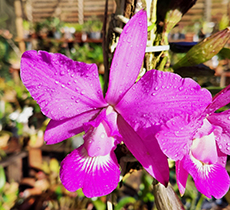 |
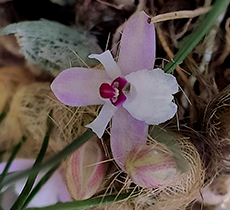 |
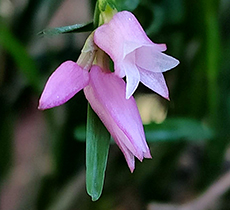 |
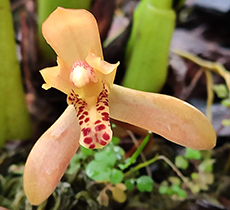 |
Cattleya walkeriana |
Isabelia virginalis |
Isochilus linearis |
Maxillaria rufescens |
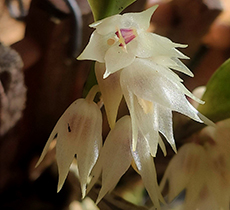 |
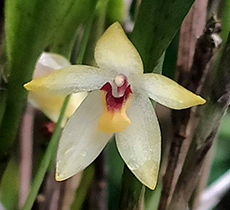 |
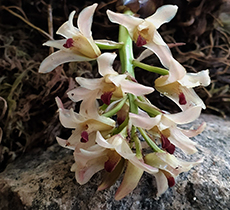 |
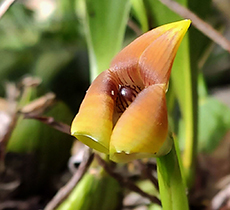 |
Octomeria diaphana |
Octomeria grandiflora |
Xylobium undulatum |
Trigonidium latifolium |
This diversified composition of plants, comprising both the most ornamental and the micro-orchids and those known by orchidists as botanicals, represent just over 100 taxa predominantly from the Atlantic Forest, but also with representatives from the Amazon and Cerrado, in addition to some exotic species (mainly Asian) and several artificial hybrids (mostly with Cattleya species as a base).
But perhaps the most attentive reader is wondering... Why, with everything that has been exposed up to this point in the text, it was stated at the beginning that the creation of the orchidarium is not just a motive of joy?
One of the reasons is the lack of collaboration and education and the disrespect of some visitors to the Botanical Garden.
Unfortunately, the greenhouse where the orchids are kept is not open to visitors, as there is no confidence that people will just admire and/or photograph the beautiful plants on display.
Soon after the beginning of the collection, as an experience, the flowering plants were taken to specific places in the beds where the bromeliads are so that the public had closer access to the exuberance and perfume of their flowers, but flowers and seedlings were removed from their vases, making this exposure impossible. Thus, currently, the plants can only be seen through the protective grid of the screen, next to which a bench was prepared where those that are flowering in the period are arranged, being carried out a continuous relay.
Again the reader may raise a question. But just put an employee at the entrance or to accompany the visitors... And such questioning leads us to a second reason why the creation of such a collection is not just a joy.
The lack of investment that has plagued teaching and research institutions (as well as science in general) in Brazil in the last five years makes this impossible. There are no employees available for this role. There is barely an employee for the periodic maintenance of the collection (which is predominantly carried out by voluntary work of some people) and there is not even a resource for it to be done properly, which makes its existence something practically unfeasible in the long term, if the current scenario will not be reversed in the near future.
Despite everything, we remain firm in our work and with the intention of establishing this as an important collection of plants in the state of Minas Gerais, encompassing both the scientific and ex situ conservation side of our so threatened biodiversity, as well as fulfilling its relevant role in the bias of attraction and education of the general public, always in the hope that better days will come so that we can keep alive the dream of more than one hundred years of establishing a public nursery in Juiz de Fora, idealized by Hoehne in the early 20th century.
Thanks
We thank Mrs. Rosário Braga for donating the plants that enabled the start of the nursery and the anonymous lady who also donated several plants that make up the collection today. Above all, we would like to thank the volunteer work of Silvia Lucia Menini de Oliveira and José Afonso de Oliveira, who since July 2020 (together with the authors) have been helping to maintain the collection, in addition to the care given by the gardener Mr. Manoel, since the beginning of 2022. |
![]()
